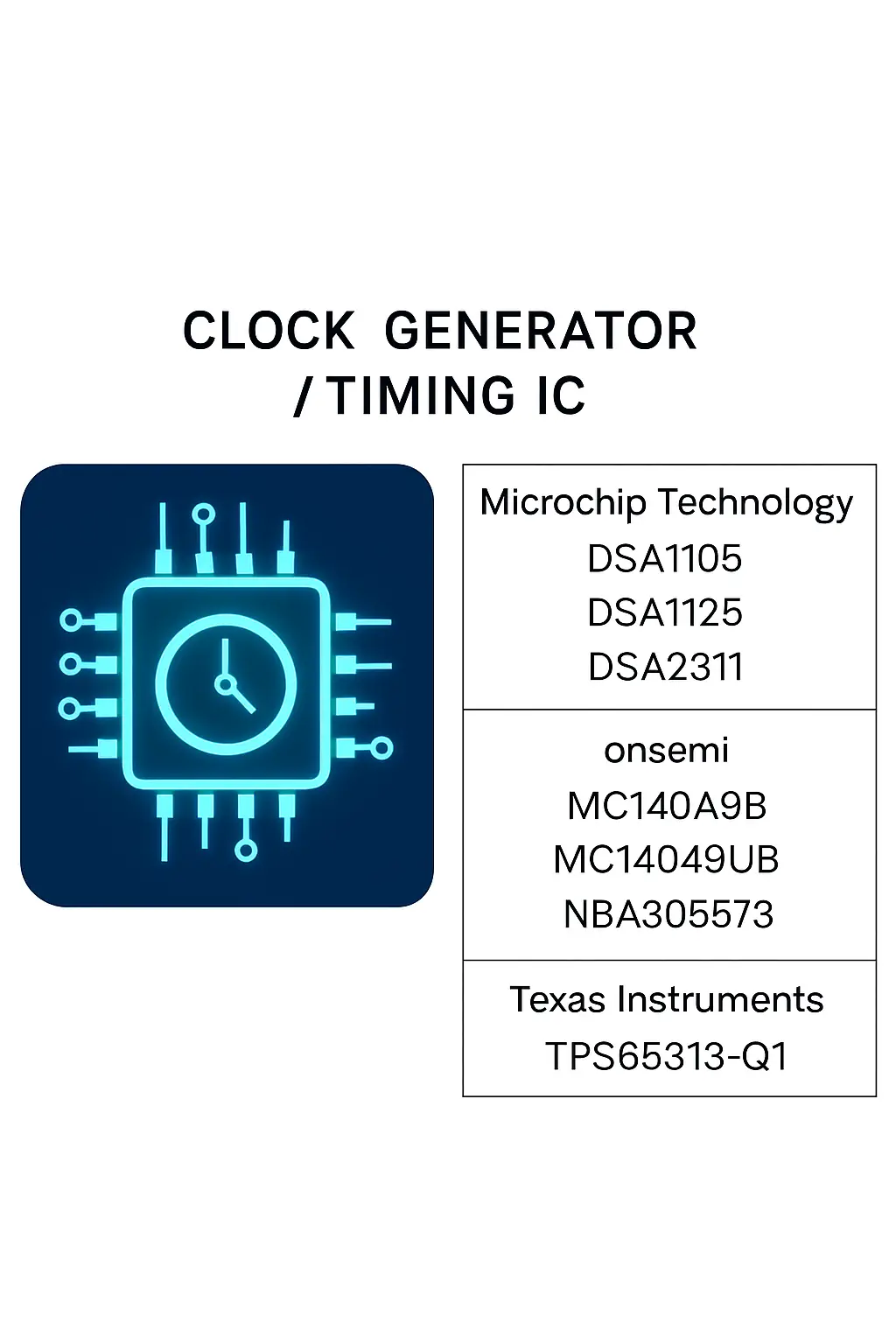Clock Generator / Timing IC
The Clock Generator / Timing IC is a critical component in Automotive Electronics, specifically within the ADAS & Autonomous Driving domain, and plays a key role in LiDAR Systems. This integrated circuit provides precise timing and synchronization signals essential for the proper functioning of complex automotive systems.
In ADAS (Advanced Driver Assistance Systems), accurate timing is crucial for sensor fusion, data processing, and real-time decision-making. The Clock Generator / Timing IC ensures that all system components—such as cameras, radar, and LiDAR—operate in sync, improving system reliability and performance.
Within LiDAR Systems, these ICs are responsible for generating high-frequency clock signals that drive the laser and sensor modules. They ensure accurate time-of-flight measurements, which are vital for object detection and environment mapping in autonomous vehicles.
Designed for high reliability and stability, Clock Generator / Timing ICs are built to withstand extreme automotive environments, including wide temperature ranges and electrical noise. They support various communication protocols and can be configured to meet specific system requirements.
These ICs are widely used in applications such as autonomous driving platforms, sensor integration systems, and real-time data processing units. Their role in maintaining system integrity and performance makes them an indispensable part of modern automotive electronics.
By providing stable and accurate timing, Clock Generator / Timing ICs contribute significantly to the safety, efficiency, and functionality of advanced automotive systems. They are essential for enabling the next generation of smart and connected vehicles.
Details
Clock Generator / Timing IC

Related Parts
| Series Name | Description | Manufacturer Name | Attribute Description |
|---|---|---|---|
| Microchip Technology | 5-channel, 100 MHz bandwidth, 1 GSa/s sampling rate, 8-bit resolution, 2 Mpts memory depth, real-time and equivalent time sampling, USB and LAN connectivity, color display. | ||
| Microchip Technology | 1.25 Gbps data rate, 2:1 multiplexer, 0.18 µm CMOS, 3.3 V supply, low jitter, high bandwidth, 16-pin QFN package, operating temperature -40°C to +85°C. | ||
| Microchip Technology | 32-bit MCU, 120 MHz, 1 MB Flash, 256 KB RAM, USB, CAN, Ethernet, 12-bit ADC, QFN64 package, operating temperature -40°C to +85°C. | ||
| Microchip Technology | 16-bit, 500 kSPS, differential input, low-power ADC with SPI interface, INL ±2 LSB, operating voltage 2.7V to 5.5V, available in 10-pin MSOP package. | ||
| onsemi | Hex Non-Inverting Buffer, 3V to 18V supply, high noise immunity, TTL-compatible inputs, low power consumption, operating temperature -55°C to 125°C, 16-pin DIP/SOIC. | ||
| onsemi | Hex Non-Inverting Buffer, 3V to 15V Supply, High Noise Immunity, TTL-Compatible Inputs, Low Power CMOS, Maximum Propagation Delay 60ns | ||
| onsemi | Hex Buffer with High-Drive Outputs, 3V to 15V Supply, TTL-Compatible Inputs, Low Quiescent Current, High Noise Immunity, 16-Pin DIP/SOIC Package | ||
| onsemi | 16-bit serial input, 3-state output register; operates from 3V to 18V; CMOS technology; low power consumption; TTL-compatible inputs; built-in output latches. | ||
| onsemi | 3.3V LVDS 4-channel Mux/Repeater, 2.5 Gbps per channel, low jitter, 1.8V/2.5V/3.3V supply, 32-pin QFN, industrial temperature range. | ||
| Texas Instruments | 3.3V/5V input, 3A buck converter, 2LDOs, integrated FETs, -40°C to 125°C operating temperature, I²C interface, automotive-grade AEC-Q100 qualified, 40-pin VQFN package. |








.png?x-oss-process=image/format,webp/resize,h_32)










